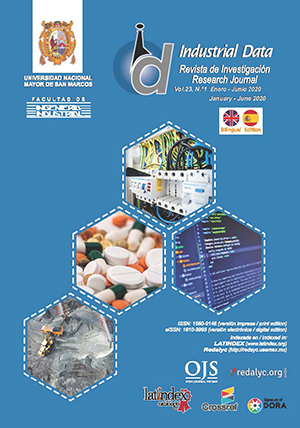Risk Control Management Model for Gas, Oil Pipelines and Polyducts
DOI:
https://doi.org/10.15381/idata.v23i1.16716Keywords:
management models, risk control, interactions, conditionsAbstract
The hydrocarbon transport industry combines its technical activities with the integrity of the installed operating systems, in addition to the implementation of safety measures for pipelines against failures and leakage of dangerous liquids. Thus, the risk control management model in all product shipment processes arises, which aligns the configuration of technical standards to operate pipelines in compliance with the prevention of substandard conditions and actions, which derive from the obligation to maintain pipeline integrity (installed capacity). This gives origin to a certain level of risk control management, as an achievement of the maximum level of conformity with the facilities, which ensures that all operating units achieve the development of new concepts of proactive, not reactive, work, in the face of unplanned disasters. In this study, significant risk levels were reduced from 30.16% to 10.26% at the end of the 2014-2017 period, which is reflected in a decrease in the consequences of the damages in facilities, a reduction in out-of-court settlements and an increase in environmentally friendly operations in accordance with industry standards.
Downloads
Downloads
Published
Issue
Section
License
Copyright (c) 2020 Alfonso Eduardo Rivas Tufiño, Sergio Júlio Núñez Solano, Ronal Elicio Moscoso Jácome

This work is licensed under a Creative Commons Attribution-NonCommercial-ShareAlike 4.0 International License.
AUTHORS RETAIN THEIR RIGHTS:
a. Authors retain their trade mark rights and patent, and also on any process or procedure described in the article.
b. Authors retain their right to share, copy, distribute, perform and publicly communicate their article (eg, to place their article in an institutional repository or publish it in a book), with an acknowledgment of its initial publication in the INDUSTRIAL DATA.
c. Authors retain theirs right to make a subsequent publication of their work, to use the article or any part thereof (eg a compilation of his papers, lecture notes, thesis, or a book), always indicating the source of publication (the originator of the work, journal, volume, number and date).






